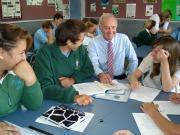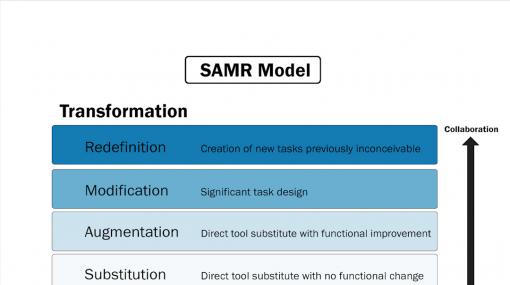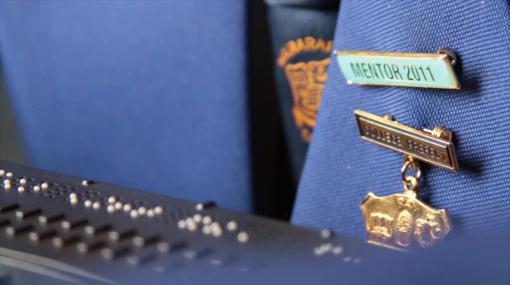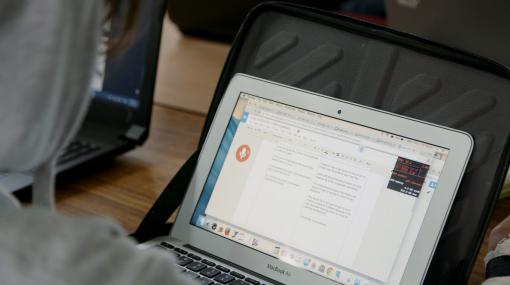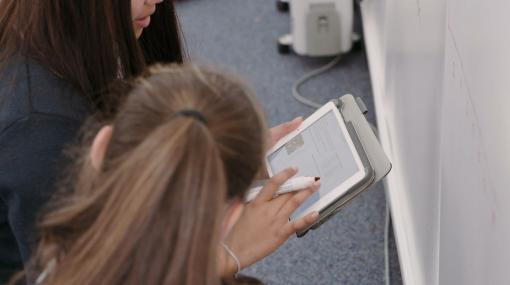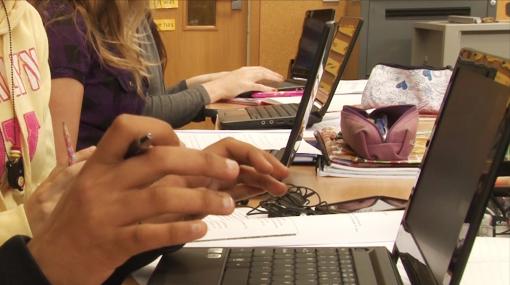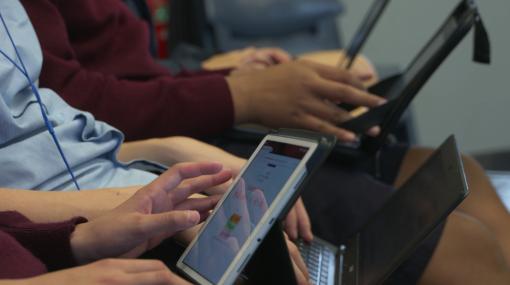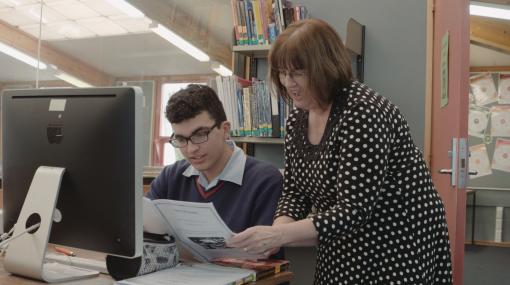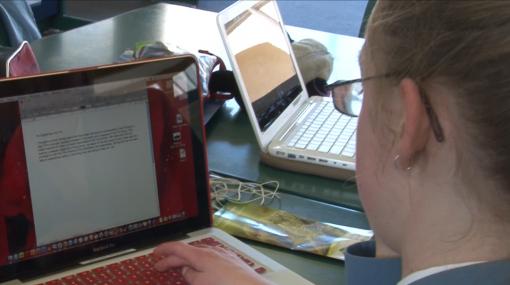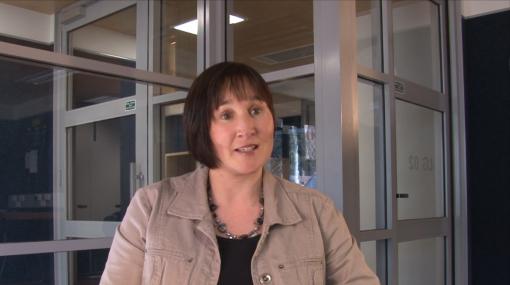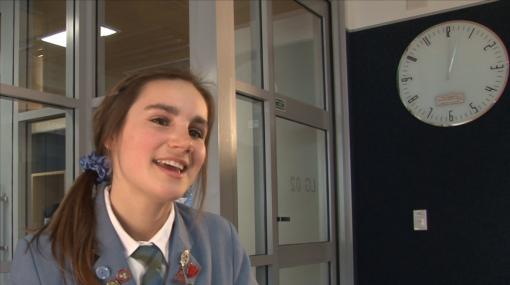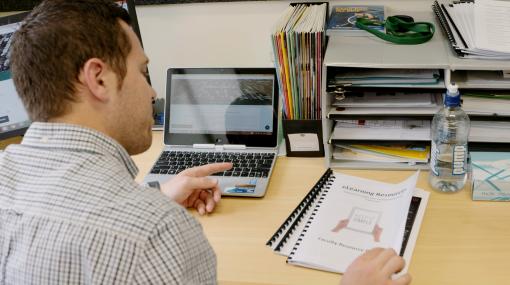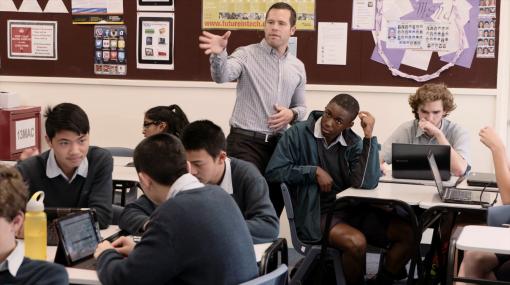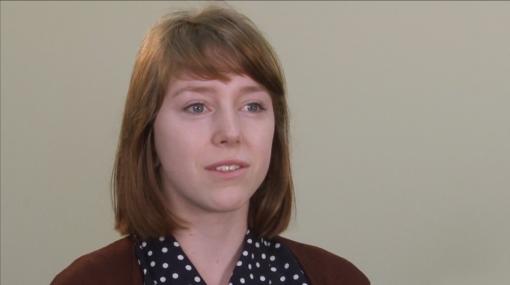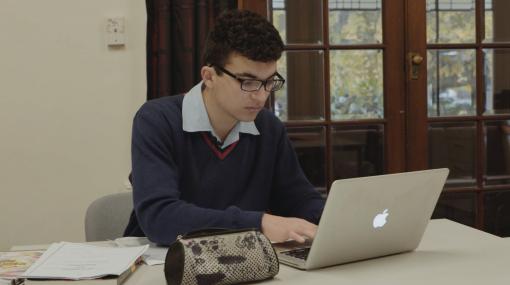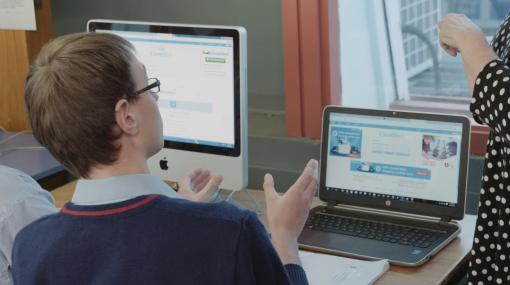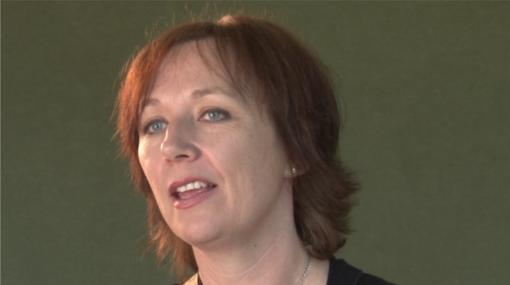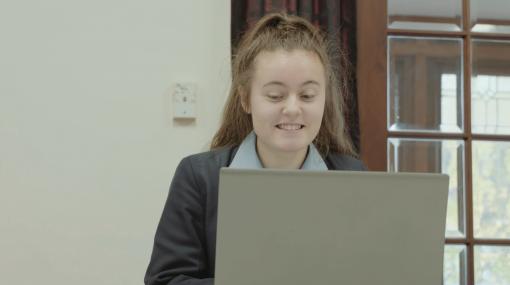Using digital technologies to support learning and build digital fluency in senior secondary school
How do digital technologies improve learning?
Innovative use of digital technology to support learning in secondary education is being driven by a changing world and an emerging awareness of the importance of addressing the needs of all learners. Technology rich environments enable teachers to develop personalised, accessible, relevant, and high-quality learning opportunities that improve student engagement and achievement.
Digital technologies
- provide new ways for students to be creative, collaborate easily, engage in learning and build social and global connections
- enable students to choose ways of working that meet their needs.
- offer greater flexibility and the ability to customise lessons
- provide access to a rich mix of multimedia curriculum support materials
- facilitate an increasing range of context, content, programmes, and learning pathways.
Using technologies to meet learner needs
Many schools are innovating to provide a curriculum that makes the most of emerging technologies to meet the needs of their learners.
Using digital technologies to support innovation in learning and teaching can result in changes to what you do and how you do it. Innovation is not constrained by physical spaces – it depends on pedagogy and practice.
Schools are using technologies to:
- offer virtual courses
- connect with experts outside the school walls
- provide authentic learning contexts
- provide learning that is not constrained by timetables, physical locations, and in-school teacher expertise.
Building digital fluency
Preparing students for digital assessments means ensuring that they are comfortable working in digital environments and have experience with a range of digital tools. Embedding the use of technologies into regular learning and assessment activities throughout the school year supports students to build digital fluency.
NZQA going digital
"NZQA needs to respond to the global and digital environment that is integral to the first decades of the 21st century. The changes we are making now will lead to NCEA being online, on-demand, anywhere, anytime. The way we do assessments and what we assess will change."
– NZQA Chief Executive Grant Klinkum
NZQAs extensive innovation programme for going digital will impact all senior secondary students. To respond to challenges and harness the opportunities provided by digital technologies, schools need to make significant shifts in practice.
More information »
- Digital fluency – information and examples to support building digital fluency on Enabling e-Learning.
Put learners at the centre
Use digital technologies to provide support for your school's diverse range of learners. Create an inclusive learning environment, which provide learners with options to personalise learning, access content, collaborate, and present/share their understandings.
"The [NZ Curriculum] principles...put students at the centre of teaching and learning, asserting that they should experience a curriculum that engages and challenges them, is forward-looking and inclusive, and affirms New Zealand’s unique identity."
Although the evidence for personalisation is strong, secondary “students in all schools were experiencing a very assessment driven curriculum and assessment anxiety."
Design for all
As each learner is unique, they will each have their own:
- goals
- learning pathways
- achievements.
The increasing use of digital technologies inside and outside school allows tailoring of learning experiences to individual learners, to respond to learner-driven choices about where, what and how learning occurs. They allow learners to manage the evidence to support and to demonstrate their achievement as learners.
– Future-focused learning in connected communities (2014)
Universal Design for Learning
Universal Design for Learning (UDL) principles supported by digital technologies enable teachers to design learning that works for everyone as a matter of course.
e-Learning teacher at Ashburton College, Nicky Lewis talks explains how and why she presents content in a variety of ways to make it accessible for all students to engage with.
Options such as text-to-speech and voice typing can be used to provide flexible ways of working. These are simple options that any student can use when they want to, but they provide specific and critical support for students experiencing barriers to learning such as those with dyslexia and dyspraxia.
Wellington High School teacher, Ben Britton explains how he creates an inclusive environment for students using different digital technologies.
Assistive technologies
Assistive technologies (AT) allow students to hear, see, access, and participate in their learning environment. AT can be used to:
- provide learning support
- increase flexibility
- increase curriculum access enabling students increased independence to expand their worlds and enhance performance.
Matt, a Year 13 student at Wairarapa College who has low vision, talks about using digital technologies in partnership with teachers and peers.
More information »
- Inclusive practice – enabling e-Learning
- Assistive technologies – enabling e-Learning
- Assistive technology – Ministry of Education information
- Technology tools for learning – Inclusive Education online guide
Enhancing culturally responsive practice
Digital technologies can be used to enhance the provision of a culturally responsive curriculum. Multimedia options allow students to create their own curriculum content and express themselves in new ways. Students can use their own language and experiences to make connections and personalise their learning.
Research shows that bringing cultural context into the curriculum affirms the students’ identity, and validates their cultural knowledge and knowledge of their whānau.
At Aorere College, all year nine students take a whole year’s course called Digital Innovation and Design as a core subject. This gives students a foundation in digital fluency, digital technologies, and design to use across all learning areas. Technology teacher, Muzaffer Ali explains how students create algorithms to draw a pattern significant to students’ own culture. Students, Rakshay, John, Lainey, and Nikki outline the patterns that they created and why they enjoyed being able to express their culture through digital technologies.
Digital resources for flexible learning
Some teachers are using websites to share key course material. These digital lessons, demonstrations, and instructional videos transform teaching and learning by providing students with the opportunity to review material prior to lessons and revisit material as needed.
Others are using a collaborative model where students are active members of a learning space where everyone contributes to building multimedia rich course materials. Students can share learning experiences, comment, ask questions, and give and receive feedback.
Tamaki College maths teacher, Noelene Dunn explains how students use the Google site she has created to support personalisation of learning. Students can select activities that meet their needs and revisit them as often as necessary.
“The activities are designed so that they (the students) can work autonomously if they want to. They don’t need me to lecture them – sometimes we’ll have small little snippets of me talking to them and the rest of the time I’m moving around the room, checking up, seeing how they are going, giving them help, talking in small groups or in one to one, and I find that so much more effective”.
– Caleb Allison, teacher – social studies and geography, Tamaki College
Online learning materials provide support and flexibility
- Digitised content allows for individuals to work at their own pace. Teachers are able to spend more time with individuals and small groups to meet their needs.
- Learning is rewindable and available 24/7 from any device; learning can occur anywhere and anytime.
- Flexible approaches to timetabling are enabled through shorter more focused lessons supported by online content, and wider choice of subject or access to a course through enrolment in online courses.
- Consistent location of daily lesson and curriculum resources means they are easy to find, supporting those learners who have difficulty organising themselves.
- Digital curation of learning materials allows for links to a range of types of resources – text, web links, video, images, interactive resources, animation, 3D models, virtual reality and diagrams. A range of options makes content more accessible for students, supporting comprehension and learning. It allows them to select the options they prefer for learning. For example, video content supports those who have difficulty reading or understanding text information.
- Course material located in the cloud gives students the flexibility to access it from any device, location, and at any time.
Flipped learning
The term "flipped classroom" refers to an approach where the content of the lesson is watched at home or outside class time and what might have been thought of as homework activities are completed in class. Class time is dedicated to problem solving, working through concepts with the guidance of the teachers, discussing ideas, working in small groups, and collaborating.
More information »
Resources created by NZ teachers to support flipped classrooms
- Maths videos – Andrew Ricciardi's YouTube channel (Waimea College)
- Bloomscool – A weebly supporting L2 and L3 Science by Graeme Bloomfield (Nayland College)
Record, reflect, and share with digital portfolios
Digital portfolios can be used by students to record their work, reflect on and share their learning, receive feedback and feedforward, and provide evidence for NCEA assessments.
Hornby High School staff talk about the ways that students use their blogs and websites to:
- track their own learning by taking photos and reflecting on a regular basis
- gather more accurate feedforward and feedback from teachers and peers
- support organisation because a digital portfolio is less likely to be lost or forgotten as a pen or book might be
- share their work and progress with others including family and whānau
- provide evidence of learning for internal standards
- submit material to NZQA for moderation by providing a direct link to where the materials have been stored.
External moderation application
About NZQA's external moderation app, including its functions and a guide to using the application.
More information »
- e-Portfolios – information and examples on Enabling e-Learning
Using SMS data to inform learning design
By tracking individual learning, assessment, and wellbeing data schools can support and design learning that is student-centred.
Your SMS is a valuable tool for ensuring everyone (whānau, teachers, and school leaders) is informed and enabled to support students’ continuing achievement and progress.
NCEA pass rates breaking through at Wainuiomata College
Wainuiomata College introduced individual achievement plans showing students exactly how many NCEA credits they have, helped them set goals and allowed teachers to identify the students who were struggling before it was too late to intervene.
Using data to analyse practice
Use data to reflect on school-wide and system-wide practice (or any part within the system) to inform learning at any level. Data can be easily monitored to ensure systems are working well or to provide evidence for change.
Looking behind the data at Queen Charlotte College
Assistant principal Jack Saxon explains, “We like to look at where we’re at – then we look at next steps … we are never complacent. If we are successful we want to understand why.”
More information »
- Data for learning – Information from Enabling e-Learning
Strengths-based assessment
Design assessments to meet the needs of all learners. Take advantage of the flexibility available in the design of assessments for NCEA standards. This is subject to the guidelines of each NCEA standard .
"The National Certificate of Educational Achievement (NCEA) was designed to be flexible and create opportunities to make tailor-made assessment opportunities rather than a one-size-fits-all approach."
– Inclusive practice in secondary schools: Ideas for school leaders (2014, p.14)
Digital technologies support the provision of flexible assessment conditions
For some students, assessments in specific formats or under certain conditions may not provide a good gauge of their learning. Use digital technologies to support the provision of flexible assessment conditions that accurately assesses student learning by:
- using a range of formats for evidence of learning (e.g. audio, video, and a variety of multimedia options)
- identifying barriers for students and providing tools such as text-to-speech, voice typing and other reader/writer options to overcome these.
Provide flexible timing, scheduling, and accommodations to gain the best evidence of learning.
Samoan language teacher, Lafi Peters from Auckland Girls’ Grammar School, explains how she combines e-learning tools in her assessments. Students film their assessments without the pressure or time constraints of timetabled classes.
Special assessment conditions
Special assessment conditions (SAC) are given to ensure that students with additional learning needs are assessed fairly. The most well known are the reader and writer conditions, but students can get SAC to meet a range of physical, sensory, medical, and learning needs.
As NZQA moves to digital assessment they are committed to building in a range of accessibility options. Some students will be able to use digital technologies to provide the assistance they need and will no longer need to apply for SAC.
Schools can use their own data and assessment information as evidence for NZQA to assess students needs in terms of SAC. Schools (and/or families) no longer need to have students tested, at significant cost, by external providers. Use your SMS to keep up-to-date data and information on student needs and supports to provide a robust and appropriate evidence to NZQA.
Considerations specific to digital assessment
- Choose the right medium for an assessment – see NZQA’s Assessment rules, 5.6 Use of technology and equipment for assessment purposes (pg. 12)
- Ensure students have equitable access to devices needed for digital assessments and practice activities.
- Develop systems and policies about privacy, information management, filing, and access to material after submission date.
- Develop procedures in case of connectivity issues and power outages during assessments.
More information »
- Inclusive practice in secondary schools: Ideas for school leaders
- Special assessment conditions – information from NZQA
- External Moderation Application – NZQA has developed an online application for managing national external moderation to improve the end-to-end process of the moderation cycle
Designing your curriculum – Begin with your vision
To drive positive change a clear vision for learning is critical. Simply adding technology to a learning environment is unlikely to lead to better learning outcomes.
National Curriculum vision
"Our vision is for young people:
- who will seize the opportunities offered by new knowledge and technologies to secure a sustainable social, cultural, economic, and environmental future for our country
- who will be confident, connected, actively involved, and lifelong learners."
The New Zealand Curriculum (2007 p. 8)
Te Marautanga o Aotearoa describes qualities and characteristics of a graduate of Māori-medium education.
- Te āhua o ā tātou ākonga, a graduate profile, is a collective vision for student learning that is shared by whānau, hapū, iwi, and kura.
- High levels of educational and socio-cultural success, a wide range of life skills, and a wide range of career pathways are promoted as outcomes.
To achieve this vision all students need:
- to be prepared for a world where change and new learning are constant and technologies are a normal part of many aspects of their lives
- adaptive expertise – the ability to apply knowledge and skills in different and novel situations.
"Many scholars agree that the ultimate goal of learning and associated teaching in different subjects is to acquire adaptive expertise – i.e. the ability to apply meaningfully-learned knowledge and skills flexibly and creatively in different situations. This goes beyond acquiring mastery or routine expertise in a discipline. Rather, it involves the willingness and ability to change core competencies and continually expand the breadth and depth of one’s expertise. It is therefore central to lifelong learning."
– The nature of learning: Using research to inspire practice – Practitioner guide (2012 p. 3)
More information »
Virtual and online learning
A virtual classroom is an online learning environment. The learning is usually accessed through a mix of web applications including:
- video conferencing for regular real time (synchronous) sessions
- a shared online resource space for accessing course material and independent study.
By offering virtual courses schools provide a very diverse curriculum to meet the needs of their learners. Large and small schools gain from offering virtual courses.
NetNZ
NetNZ provides the opportunity for students to learn from teachers right across the NetNZ network of schools. They connect students with teachers from secondary and area schools within the NetNZ network. Courses are open to anyone in or outside of NetNZ, whether students from a non-NetNZ school, home schools, international students or adult learners.
Lalaosalafai Tu’ua describes his experience of using video conferencing to teach Samoan at NCEA Level 3 at Southern Cross Campus in Mangere.
Ashburton College e-Dean, Anne Williams explains students are developing many skills through being online learners. Students are becoming more organised, feel motivated, have learnt to use a range of digital tools, and feel like they're in charge of their own learning.
Ashburton College students, Vlad and Olivia describe the benefits of timetable flexibility, easy access to course content, and the independent learning skills they have developed through participating in NetNZ courses.
Utilising NetNZ
Ashburton College (with more than 700 senior students) and Roxburgh Area School (with only 30 senior students), offer NCEA courses run by NetNZ .
Classes take place through Google Hangouts (video conferencing). Typically, learners from several different schools are in the same class. Each course is run by an e-teacher and students are expected to self-manage their learning. They are supported in their own school by local staff.
Ashburton College e-Dean, Anne Williams explains how online learning provides students with timetable flexibility and personalisation of learning. She explains their system of support for students to enable successful learning outcomes.
Interest-based courses
Technology is an enabler for course innovation. The Internet provides a rich source of resources in many niche subject areas and connects people and communities in new ways. It allows students and teachers to create their own resources and share ideas so schools can be more innovative in their course design.
Interest-based courses can engage and motivate students in new ways and provide authentic experiences.
Offering a wide selection of course options allows students to build skills within areas that interest them. For example, Heretaunga College offer 19 different English courses.
At Pakuranga College virtual reality (VR) is an extension opportunity for students to build their coding skills. It builds on from their NCEA programme of 2D and 3D programming. Their aim is to build capacity within the school to bring VR into the curriculum and the timetabled classes.
"Motivation ensures that students acquire knowledge and skills in a meaningful way. Like emotion, the presence of positive motivation towards a learning task markedly increases the likelihood that students will engage in deep learning."
– The nature of learning: Using research to inspire practice – Practitioner guide (2012 p. 4)
Cross curriculum design
Many schools are combining traditional subjects to provide more authentic, project, and interest based courses. By collaborating and innovating, one task can be assessed against requirements for two or more subject areas.
"Designing context-rich courses often means a degree of curriculum integration because the real world does not conform neatly to historical subject divisions. For example, a course called 'Writing for Publication'... models the integration of achievement standards from different learning areas to combine aspects of traditional subjects that logically come together in a highly relevant context with strong links to real-world settings."
– Course innovation in the senior secondary curriculum: A snapshot taken in July 2007 (NZCER p.vii)
Cross-curricular pairings
Cross-curricular pairings rely on collaboration between two subject teachers. By combining work over two subjects assessment against NCEA standards can be, for example:
- pairing visual arts and biology resulted in a coffee table book of biological drawings
- pairing English and design, students wrote a 3D printed poem where the shape of the poem was a metaphor for, or had relationship to the meaning of the poem.
Example of cross-curricular pairings
- Fraser High School curriculum integration project – students reflect – senior secondary students reflect on how their learning has changed through curriculum integration and the use of authentic contexts as they produced the first issue of Passionfruit magazine in this video.
- What if the world were a village of 100 people (with a twist) Pt1 – a blog post describing combining maths and geography at Hobsonville Point Secondary School.
- Cross-curricula and personalised learning – a video from Auckland Girls’ Grammar School. A Samoan language teacher uses the context of Samoan Independence Day for her Year 12 Samoan language class in consultation with the Year 12 History class.
More information »
Curriculum integration: What is happening in New Zealand schools? (2019)
This research report presents findings on teachers’ rationales for curriculum integration; the approaches and practices used to integrate curriculum; and the learning opportunities these approaches provide for students.
Project-based learning
Project-based learning enables students to gain skills and knowledge by engaging in a project rather than working in one subject area. The project can be:
- based on a teacher’s design
- selected by students students, giving students full autonomy
- agreed between teacher and students, giving students some degree of autonomy.
Examples of project-based learning
Hobsonville Point Secondary School
"Projects are authentic, collaborative learning experiences based around a meaningful issue, challenge or needs-based situation in our community. Students undertake exploration and inquiry, working with real world partners to develop innovative actions. The result is the creation of products, knowledge and outcomes that make a contribution to the community.
In Year 9, students are introduced to the project process for the first time and take part in a number of projects throughout the year. In Year 10 and 11, students are grouped together and take on either term or semester long projects. In Year 12 and 13, projects develop in complexity and impact and will last the year.
Students engaged in projects are developing skills like creative thinking, questioning, problem-solving, initiative, communication, empathy, and all while taking meaningful action - not learning about something but through something."
More information »
School stories
Filter by: Inclusion Accessibility Assistive technologies Student agency Self-regulated learning Collaborative learning English Media studies Visual arts Art history Mathematics and statistics Classroom practice Learning languages e-Leadership Professional development Strategic planning
Sorry, no items found.
Resources and readings
Senior secondary teaching and learning guides
These guides have been designed to help teachers create quality teaching and learning programmes at levels 6–8 of The New Zealand Curriculum (2007). They support teachers in their planning for the alignment of standards to The New Zealand Curriculum.
NZQA - Our strategies and projects
New Zealand Qualifications Authority information outlines the recent work they have done, what they are currently doing, and what they are thinking about.
Inclusive practice in secondary schools: Ideas for school leaders (2014)
Inclusive practice ideas for school leaders. A resource to start discussion on what is working well and what may need to improve.
Curriculum integration: What is happening in New Zealand schools? (2019)
This report presents the findings from a research project on curriculum integration in New Zealand schools, carried out by NZCER in 2018–19.The purpose of this NZCER research was to explore teachers’ rationales for curriculum integration; the approaches and practices used to integrate curriculum; and the learning opportunities such approaches provide for students.
